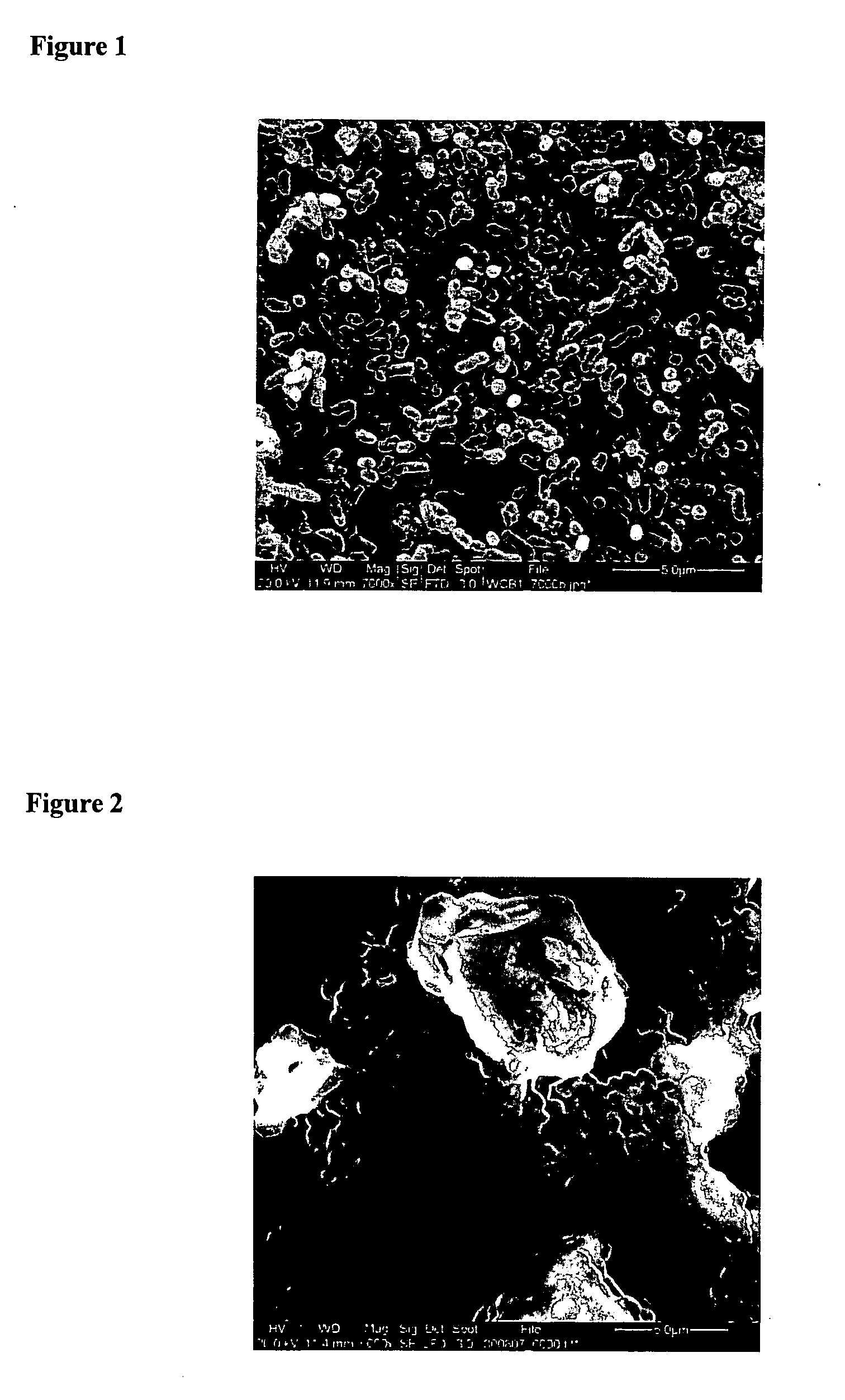Substituted benzoquinones and hydroquinones in the treatment of periodontal diseases
a technology of hydroquinones and substituted benzoquinones, applied in the field of substituted benzoquinones and hydroquinones in the treatment of periodontal diseases, can solve the problems of increasing the mobility of teeth, poor dental hygiene, and progressive resorption of alveolar bone, so as to reduce the risk of subsequent growth and reduce the effect of risk
- Summary
- Abstract
- Description
- Claims
- Application Information
AI Technical Summary
Benefits of technology
Problems solved by technology
Method used
Image
Examples
example 1
Activity Against P. gingivalis &S. mutans (MIC & MBC Assays)
[0176]The following experiments were conducted using P. gingivalis NCTC 11834 and S. mutans ATCC 25175 as the test organisms.
[0177]MIC and MBC assays, as described above, were carried out using the test compound t-butyl-p-hydroquinone (TBHQ), which was obtained from Sigma Aldrich, UK. The antimicrobial chlorhexidine (CHX), a compound found in many oral healthcare products and known for use against P. gingivalis and periodontal diseases, was used as a comparison; this compound was also obtained from Sigma Aldrich, UK.
[0178]The TBHQ was dissolved in ethanol and the CHX in distilled water. The TBHQ experiments were conducted in triplicate and the CHX ones in duplicate.
[0179]The results are shown in Tables 1 and 2 below, for TBHQ and CHX respectively.
TABLE 1TBHQMICMBCMIC / MBCTest organism(μg / ml)(μg / ml)ratioP. gingivalis NCTC 118340.490.980.5S. mutans ATCC 2517531.2531.251
TABLE 2CHXMICMBCMIC / MBCTest organism(μg / ml)(μg / ml)ratioP. ...
example 2
Activity Against P. gingivalis &S. mutans (SCKAs)
[0184]The following experiments were conducted using P. gingivalis NCTC 11834 and S. mutans ATCC 25175 as the test organisms.
[0185]SCKAs, as described above, were carried out using TBHQ as the test compound. Chlorhexidine was used as a positive control and 2.5% ethanol as a negative control.
[0186]For the SCKA experiments, the TBHQ and chlorhexidine were both tested at concentrations of 0.2% w / v. The TBHQ was dissolved in ethanol and the chlorhexidine in distilled water. All the experiments were conducted in triplicate.
[0187]The results for P. gingivalis are shown in Table 3 and those for S. mutans in Table 4.
TABLE 3Viable cell counts(Log10 cfu / ml)Treatment0 min0.5 min1 min0.2% (w / v) TBHQ9.326.50*3.00(±0.1)(±0.46)(±0.0)0.2% (w / v) CHX9.29*3.00*3.00(±0.11)(±0.0)(±0.0)Control9.359.479.46(±0.05)(±0.01)(±0.02)*3.00 = limit of detection for the assay
TABLE 4Viable cell counts(Log10 cfu / ml)Treatment0 min0.5 min1 min0.2% (w / v) TBHQ7.647.567.36(...
example 3
Activity Against P. gingivalis &S. mutans (Biofilm Disruption Assays)
[0189]The following experiments were conducted using P. gingivalis 381 and S. mutans ATCC 25175 as the test organisms.
[0190]Biofilm disruption assays, as described above, were carried out using TBHQ as the test compound and chlorhexidine as a positive control. The negative control was 5% ethanol.
[0191]For these experiments, the TBHQ and chlorhexidine were tested at concentrations of 0.2% w / v. The TBHQ was dissolved in ethanol and the chlorhexidine in distilled water. All the experiments were conducted in triplicate.
[0192]The results for P. gingivalis are shown in Table 5 and those for S. mutans in Table 6.
TABLE 5Viable cell counts(Log10 cfu / ml)Treatment0 min2 min5 min0.2% (w / v) TBHQ7.746.52*2.00(±0.1)(±0.01)(±0.0)0.2% (w / v) CHX7.746.086.29(±0.1)(±0.75)(±0.39)Control7.747.637.68(±0.1)(±0.14)(±0.21)*2.00 = limit of detection for the assay
TABLE 6Viable cell counts(Log10 cfu / ml)Treatment0 min2 min5 min0.2% (w / v) TBHQ6....
PUM
| Property | Measurement | Unit |
|---|---|---|
| Viscosity | aaaaa | aaaaa |
| Area | aaaaa | aaaaa |
Abstract
Description
Claims
Application Information
 Login to View More
Login to View More - R&D
- Intellectual Property
- Life Sciences
- Materials
- Tech Scout
- Unparalleled Data Quality
- Higher Quality Content
- 60% Fewer Hallucinations
Browse by: Latest US Patents, China's latest patents, Technical Efficacy Thesaurus, Application Domain, Technology Topic, Popular Technical Reports.
© 2025 PatSnap. All rights reserved.Legal|Privacy policy|Modern Slavery Act Transparency Statement|Sitemap|About US| Contact US: help@patsnap.com


